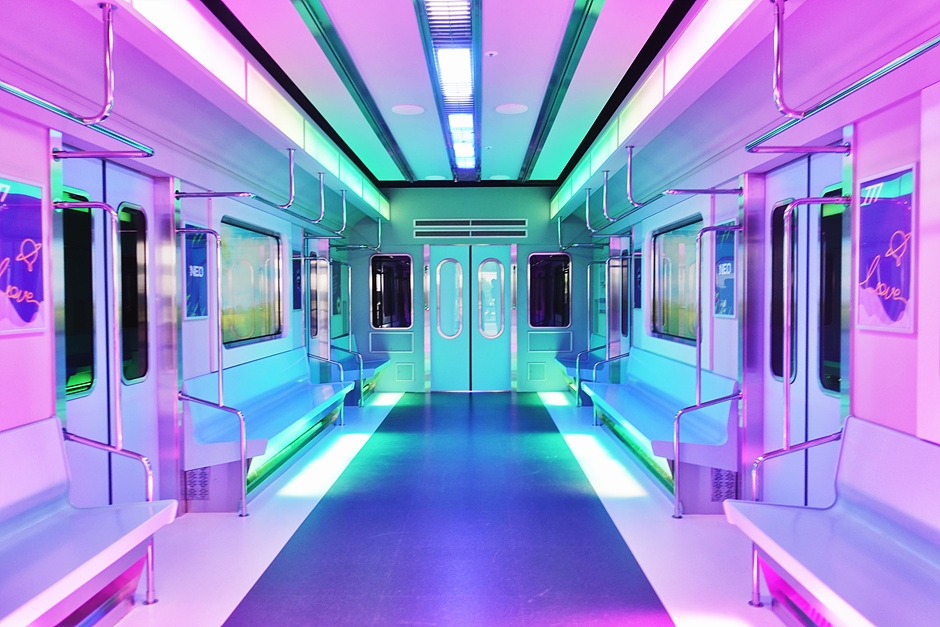The Clim Clinic (더끌림산부인과의원)
5.7Km 2025-10-23
(12th Floor, 2431 Building),109 Toegye-ro, Jung-gu, Seoul
For your healthy and beautiful life,
The Clim: Women Care Medical Group is always here for you.
At The Clim, female medical staff from Samsung Medical Center offer one-on-one consultations and personalized treatments.
Our all-female medical team provides emphatic care, understanding our patients better than anyone else.
We always listen to and address your deepest worries with warm-hearted treatment that is attuned to the needs of women, delivered by medical staff who possess both skills and expertise.
Our team consists solely of female obstetrician/gynecologists who have a deep empathy and understanding for their patients, ensuring that each patient feels more comfortable and satisfied with their procedures.
Drawing on our extensive experience, we promise to carefully consider each patient's unique physical structure, characteristics, and concerns, allowing us to effectively address even the most profound worries.
Toxnfill Clinic - Myeong-dong Branch [Tax Refund Shop] (톡스앤필의원 명동점)
5.7Km 2024-06-27
84, Namdaemun-ro, Jung-gu, Seoul
-
Olive Young - TIMEWALK Myeongdong Branch [Tax Refund Shop] (올리브영 명동타임워크점)
5.7Km 2024-06-27
#108 and #109, 78, Namdaemun-ro, Jung-gu, Seoul
-
Adidas Original - Myeongdong Branch [Tax Refund Shop] (아디다스오리지널 명동점)
5.7Km 2024-04-19
20, Myeongdong 8na-gil, Jung-gu, Seoul
-
BBQ CHICKEN Myeong-dong Star(BBQ치킨 명동스타)
5.7Km 2024-03-07
2F, 2 Myeongdong 4-gil, Jung-gu, Seoul
+82-507-1363-8810
BBQ CHICKEN Myeong-dong Star's signature dish is the Golden Olive Fried Chicken, which is fried in savory olive oil. The crispy batter and tender, savory meat are excellent. Patrons have other option to yangnyeom chicken (seasoned fried chicken), basak garlic chicken, or half and half. Ordering chicken legs and wings by cut is also a favorite. The best combination is with a cold beer.
HiKR Ground (하이커 그라운드)
5.7Km 2025-10-29
40 Cheonggyecheon-ro, Jung-gu, Seoul
Located inside the Korea Tourism Organization Seoul Center, HiKR Ground is a Korean tourism publicity center where visitors can experience K-pop and view media art at the same time. The name "HiKR Ground" embodies the meaning that Korea (KR) will greet ("Hi") global tourists and become a playground. Notably, it provides Korean tourism content in multiple ways for the younger generation to enjoy. On the first floor, there is a space to enjoy various media arts through the large media screen HiKR Wall, where visitors can see "Landscape of the New City" by media artist Lee Lee-nam, and Korean tourism videos submitted by global hallyu fans. On the second floor, visitors can make their own K-pop music videos using the XR Live Studio. At the window facing the restored Cheonggyecheon Stream, there is a mesmerizing artwork called ''North Wall'' by installation artist Suh Do-ho. On the third and fourth floors, visitors can get immersed in Korean local tourism through various arts, experiences, and exhibitions.
We Ride (위라이드)
5.7Km 2023-07-28
40 , Cheonggyecheon-ro, Jung-gu, Seoul
"The best way to tour Seoul"
With WeRide's certified tour guides, travelers can experience unforgettable memories by riding an electric bicycle to attractions hidden all over Seoul. The tour takes 2 hours and 30 minutes, and participants can safely tour around Seoul with a professional guide. The fun of electric bicycles adds to the joy of the guide's story of Korean culture. If there are guests who cannot ride bicycles, they can use electric rickshaws. There is also a bicycle rental service for bicycle riders traveling in Korea.
Mediround.Corp (주식회사 메디라운드)
5.7Km 2025-10-23
10F, Unit B1031, 8, Gangnam-daero 69-gil, Seocho-gu, Seoul
Mediround is a specialized infrastructure service company providing expert assistance (HELP) for attracting international patients.
- H (Human Resource): Matching medical interpreting and customer service (CS) personnel
- E (Education): Training and development of professionals for international patient attraction
- L (Logic): Registration of international patient attraction institutions and setting up attraction business infrastructure
- P (Promotion): Development of international patient attraction products and global promotion
Mediround operates the international medical coordinator subscription service, Mycoordy. Mycoordy offers information on Korean medical institutions, online consultation, reservation services, interpretating support, and payment services.
MJ FLB ((주)엠제이에프엘비)
5.7Km 2025-10-23
#809, 8F, 40 Cheonggyecheon-ro, Jung-gu, Seoul
MJ FLB attracts foreign patients in eight medical specialties (plastic surgery, dermatology, dentistry, ophthalmology, gynecology, men's urology, orthopedics, and physical checkups), mainly targeting Chinese-speaking clients. It provides dedicated reservation and consultation services to foreign patients. Additionally, it has professional Chinese medical interpreters to ensure smooth communication between the hospital staff and patients, thus ensuring an efficient treatment. MJ FLB attracts foreign patients through customized social media promotions and marketing collaborations with influencers who have experienced its hospital services.

![Toxnfill Clinic - Myeong-dong Branch [Tax Refund Shop] (톡스앤필의원 명동점)](http://tong.visitkorea.or.kr/cms/resource/51/3314551_image2_1.jpg)
![Adidas Original - Myeongdong Branch [Tax Refund Shop] (아디다스오리지널 명동점)](http://tong.visitkorea.or.kr/cms/resource/39/2878639_image2_1.jpg)

 English
English
 한국어
한국어 日本語
日本語 中文(简体)
中文(简体) Deutsch
Deutsch Français
Français Español
Español Русский
Русский